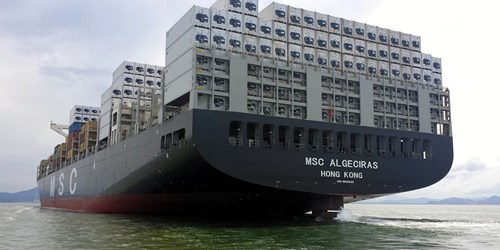Insurers liability a big concern for ships stranded in Ukraine
Ships stranded around the east Ukrainian port of Mykolaiv are set to be the centre of war risk insurance payouts amounting to hundreds of millions of US dollars on the anniversary of Russia’s invasion.
The region has the highest concentration of ships that have remained stranded at Ukraine ports since Russian tanks rolled across the Ukraine border on 24 February last year.
The port sits right on the frontline of the battle between Ukrainian and Russian forces, which has severely restricted access and prevented ships from leaving.
War risk policies typically pay out on ships blocked or trapped in port due to war after 12 months, although some had terms that settled on an earlier six-month period. Most of the vessels are insured either through the commercial or the mutual war risk market.
According to AIS data, there are at least 20 ships of more than 10,000 dwt each — mostly bulkers and tankers that trade internationally — caught around Mykolaiv, with current total valuations running in excess of $200m.
Among the most valuable ships are the 20,000-dwt tanker MTM Cascais (built 2017), valued at $38.6m by VesselsValue; the 38,000-dwt tanker Harald Maersk, valued at $28.7m; and the 44,000-dwt Star Pavlina (built 2021), valued at $29.9m.
There are some vessels still caught up in Ukraine ports that are part of the UN grain initiative, such as the 9,403-teu Joseph Schulte (ex-MSC Algeciras, built 2013) at the port of Odesa — a container ship that was ineligible to work on the UN programme — and the 178,000-dwt capesize bulk carrier Ocean Courtesy (built 2008) at the port of Yuzhny.

The Joseph Schulte is the highest-value vessel in the region, worth about $65.1m. In the firing line: The Joseph Schulte — pictured under a former name of MSC Algeciras — is among the vessels still trapped on the frontline of the war (Photo: Lotsemann/CC BY-SA 2.0)
Safety concerns
Concerns about the safety of these vessels have been raised by the news of attacks on ships in the Kherson region along the Dnipro River, where there are also a significant number of ships trapped — mostly smaller bulk carriers and general cargo ships.
The eventual owners of the vessels remaining in the region will have to take out war risk cover against loss of the asset and potential third-party liabilities. An attack on a stranded vessel, or a prolonged period trapped in the region, could make the insurer liable for such liabilities and wreck removal.
Source: Tradewinds News By Adam Corbett